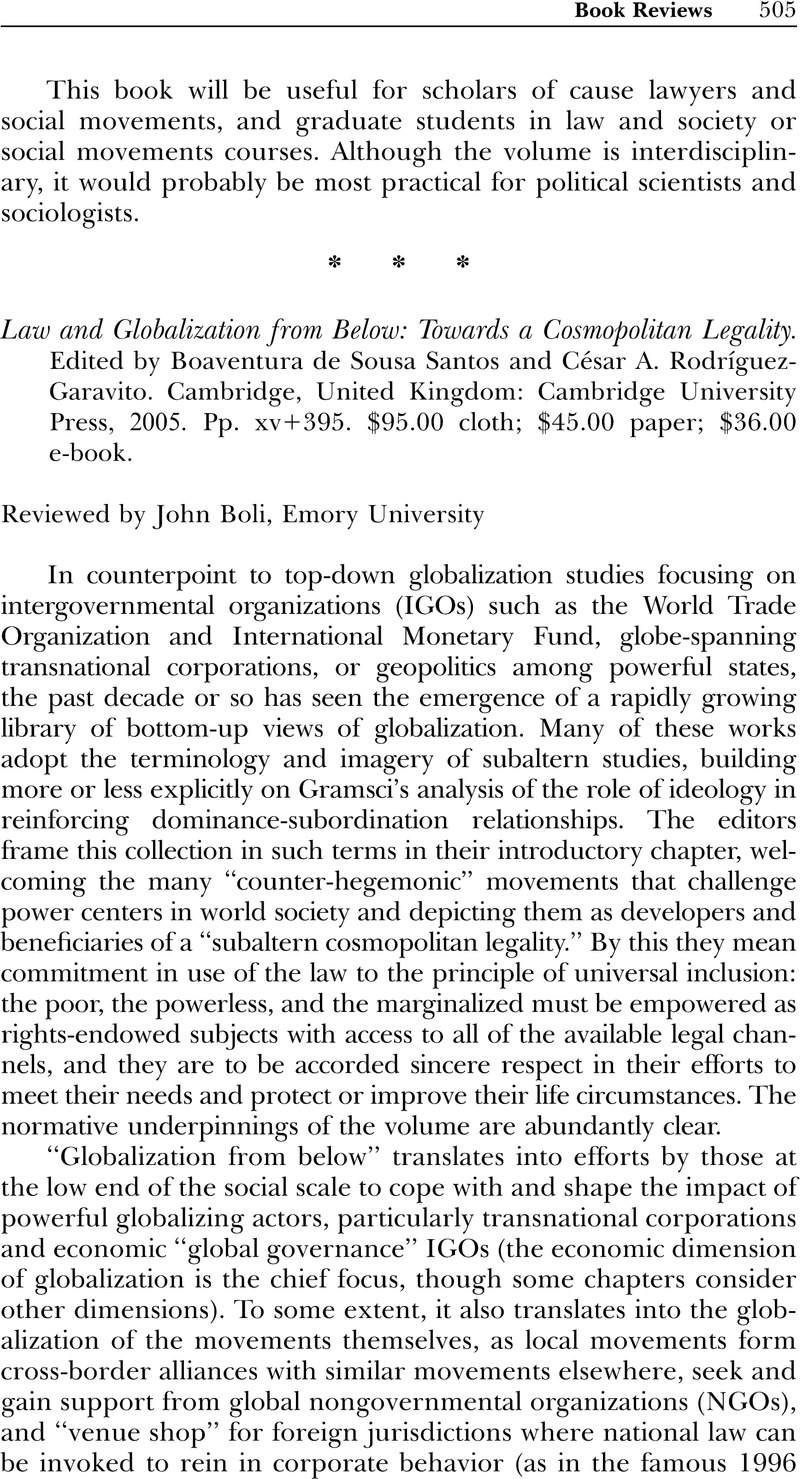Crossref Citations
This article has been cited by the following publications. This list is generated based on data provided by Crossref.
Fakhri, Michael
2008.
Anxieties and Aspirations: A Schematic Note on the Toronto Group for the Study of International, Transnational and Comparative Law.
SSRN Electronic Journal,
Halliday, Terence C.
Pacewicz, Josh
and
Block-Lieb, Susan
2011.
Who Governs? Delegations in Global Trade Lawmaking.
SSRN Electronic Journal,
Finchett-Maddock, Lucy
2012.
Seeing Red: Entropy, Property, and Resistance in the Summer Riots 2011.
SSRN Electronic Journal,



